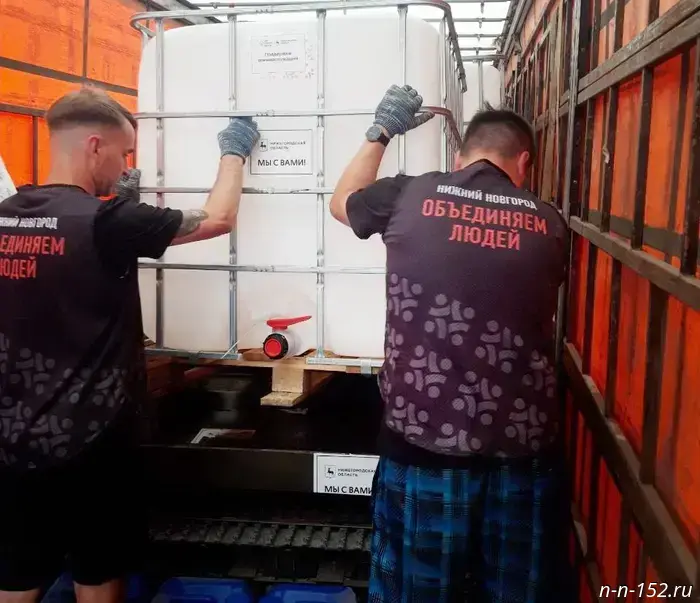
How to choose a truck for construction transportation
July 11, 2025 12:52
[108]
erid: 2SDnjeBdA2i
Construction Trucks: What Really Matters
On construction sites or during the delivery of building materials, the brand and bodywork are less important than the truck’s ability to handle load—daily, unpredictable, and sometimes critical. Such vehicles operate overloaded, travel over rough terrain, sit in dust, and absorb vibrations and shocks without prior preparation.
A construction truck is not a universal vehicle. It is designed or adapted for a specific type of cargo, particular road conditions, and the nature of loading and unloading. A mistake during selection turns into a daily struggle with operational failures. Therefore, configuration is a key issue.
What differentiates a construction truck from any other
The structure of a working vehicle must ensure frame rigidity, resistance to torsion, and stable behavior under point loads. Most construction materials are heavy and unevenly distributed: pallets with cement, blocks, gravel, corrugated sheets. Weight varies, and load geometry is usually different.
It is crucial that the cargo platform is either open-sided or tipping, with the ability to unload cargo without a crane. The height of the side, the shape of overhangs, and the unloading angle are not secondary details but economic parameters: how long unloading takes, how safe it is, and whether there is a risk of body damage.
The chassis must withstand high loads without deformation. Reinforced axles, frame connections, and proper load distribution on the axle are what ensure the vehicle’s durability. Suspension choice most often favors leaf springs—they are simpler, more reliable, and better at absorbing shocks on uneven surfaces than pneumatic systems. Air suspension is only suitable for urban delivery or work with slabs where smoothness is crucial.
Useful volume and payload capacity
For construction tasks, trucks with payloads from 4.5 to 12 tons are most often chosen. Platform volume can range from 10 to 20 m³ depending on the tasks. For example, a van up to 6 tons with a 5–6 meter platform can hold up to 8 pallets or up to 12 cubic meters of building materials without overloading. It’s important to consider not only weight but also payload density. Dry mixes are compact but heavy; foam blocks are voluminous but relatively lightweight. They require larger loading areas rather than maximum mass capacity.
An additional factor is the presence of a tarp, removable sides, fixing points, and the ability to install a hydraulic tailgate or crane-manipulator. These elements are not mandatory in base configuration but are often necessary during operation.
Best construction truck models in 2025
Among trucks proven reliable in construction logistics, five platforms stand out, each suited to different types of tasks.
GAZon Next—Russian platform up to 6 tons. Simple, repairable, adapted for poor roads. Ideal for regional delivery of building materials with short distances.
Isuzu N-Series (N75/N80)—a proven Japanese platform. Up to 7.5 tons, economical, with good dynamics and high engine durability. Suitable for city and suburban deliveries.
Fuso Canter 6с13— durable and versatile. Can be configured as a dump truck. Resilient to overload, especially in bulk tasks.
Mercedes-Benz Atego 816—European standard with precise assembly. High residual value, reliable on highways. Performs well on long-haul routes, especially with regular loading schedules.
MAN TGM 13.240— designed for heavy construction flows. Up to 12 tons, multi-variant frame, high cargo efficiency. Capable of long-term operation over 100,000+ km annually without major repairs.
Five scenarios where the right choice is critical
1. Delivering bricks and cement to city points
A maneuverable truck with a short wheelbase and small turning radius is needed. Access roads are limited, loading is dense, weight is constant. Optimal—Isuzu N75 with leaf spring suspension and low platform.
2. Delivering bulk materials to rural sites
Gravel, sand, dry mixes. A tipping platform with high sides and reinforced body is required. Fuso Canter or GAZon in tipper configuration are suitable.
3. Shipping long items (profiles, timber, beams)
Requires a truck with a long platform and high frame. The key parameter—is bending stiffness. The best solution is MAN TGM with reinforced rear axle and multi-leaf spring.
4. City logistics of 15–20 addresses per day
Minimizing fuel consumption and reducing suspension wear over curbs and manholes are important. Mercedes Atego or Isuzu N-Series with insulated cab and spring suspension are practical choices.
5. Projects with poor access roads
If construction is on the outskirts without solid pavement, a truck with high ground clearance, wide tires, and weight margin is needed. GAZon Next with reinforced leaf spring is the best in terms of overall cost and survivability.
What to check before buying a truck
Before choosing, focus on specific technical parameters and working conditions:
- Cargo platform. Assess whether the most common loading method is a forklift, crane, or manual. This determines whether a sideboard configuration, hydraulic lift, or curbside access is needed.
- Route and surface. If most of the route is dirt or cracked asphalt, suspension should be leaf spring, ground clearance above average, and tires reinforced. For city use, maneuverability and compactness are more important.
- Work cycle. One trip per day over 100 km and six short trips of 20 km each impose different demands on transmission, brakes, and shock absorbers. The truck must be suited to the specific loading profile.
- Peak load. The actual weight of cargo during busy days should be known precisely. Focus on maximum rather than average load. It is recommended to include a 10–15% margin in payload capacity.
- Service availability. Check if service centers are within 100 km, which components wear out quickly, and the cost of critical parts—brake pads, filters, silent blocks, springs.
- Planned load on 2–3 years. If transportation volumes are expected to increase, choose a model with a reserve margin. The truck should not be "just fit" for current loads—that accelerates wear.
Do you work with cargo equipment? Increase your income through partner sales of trucks.
If you don’t choose wisely at the start, problems will begin not in a year but on your first project. A truck selected without considering these nuances will quickly prove you were wrong.
Advertisement. LLC "Alliance Trux." INN 5047155538 alliance.promo
NIА "Nizhny Novgorod" has a Telegram channel. Subscribe to stay updated on major events, exclusive materials, and real-time information.
Copyright © 1999–2025 NIА "Nizhny Novgorod". When reposting, a hyperlink to NIА "Nizhny Novgorod" is mandatory. This resource may contain 18+ materials.
Другие Новости Нижнего (Н-Н-152)
 A multifunctional space for family recreation was created in Shatki thanks to the national project.
News of Nizhny Novgorod
A multifunctional space for family recreation was created in Shatki thanks to the national project.
News of Nizhny Novgorod
 Over 8,000 residents of Nizhny Novgorod benefited from government support for career guidance from January to June.
News of Nizhny Novgorod
Over 8,000 residents of Nizhny Novgorod benefited from government support for career guidance from January to June.
News of Nizhny Novgorod
 Nizhny Novgorod former high school students are asked to soften the sentence in the case of fake news about the RF Armed Forces.
News of Nizhny Novgorod
Nizhny Novgorod former high school students are asked to soften the sentence in the case of fake news about the RF Armed Forces.
News of Nizhny Novgorod
 20 tons of humanitarian aid were shipped from the Nizhny Novgorod region to the zone of the special military operation.
News of Nizhny Novgorod
20 tons of humanitarian aid were shipped from the Nizhny Novgorod region to the zone of the special military operation.
News of Nizhny Novgorod
 More than 350 tourists visited OMK завод as part of the "Vyksa Festival."
News of Nizhny Novgorod
More than 350 tourists visited OMK завод as part of the "Vyksa Festival."
News of Nizhny Novgorod
 Nizhny Novgorod residents warned about a new scam scheme
News of Nizhny Novgorod
Nizhny Novgorod residents warned about a new scam scheme
News of Nizhny Novgorod
How to choose a truck for construction transportation
News of Nizhny Novgorod
